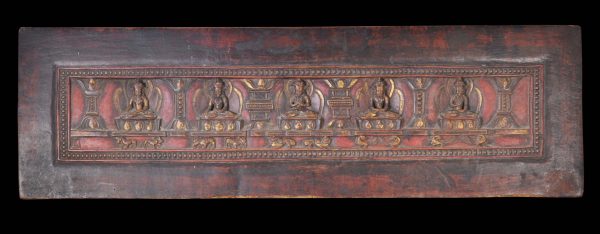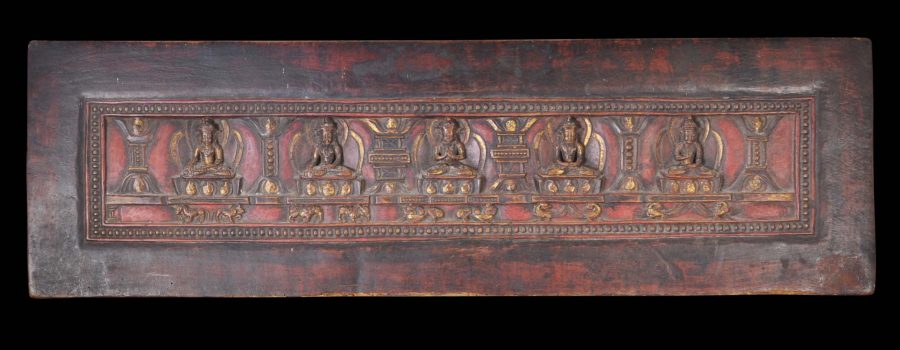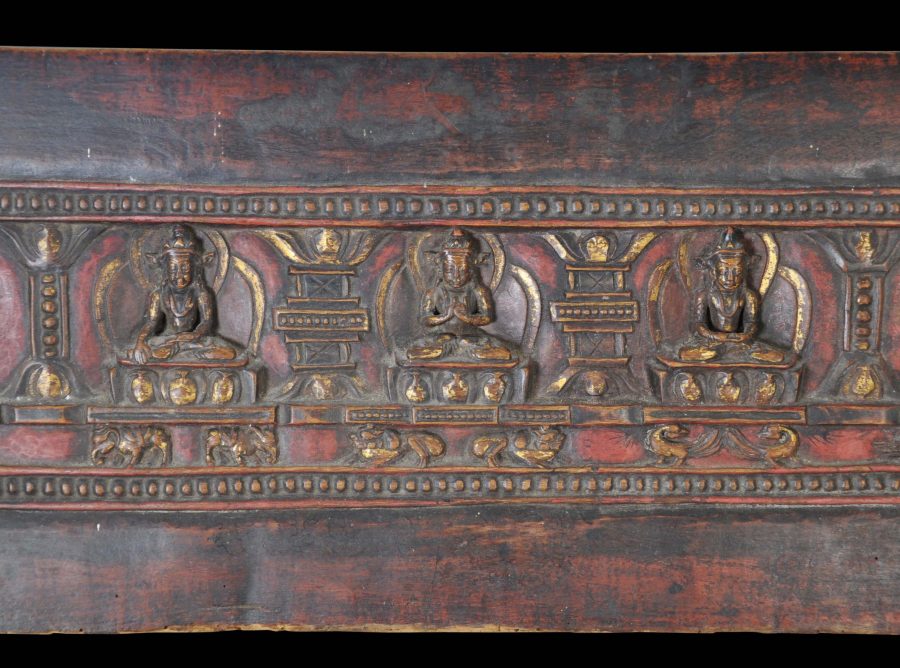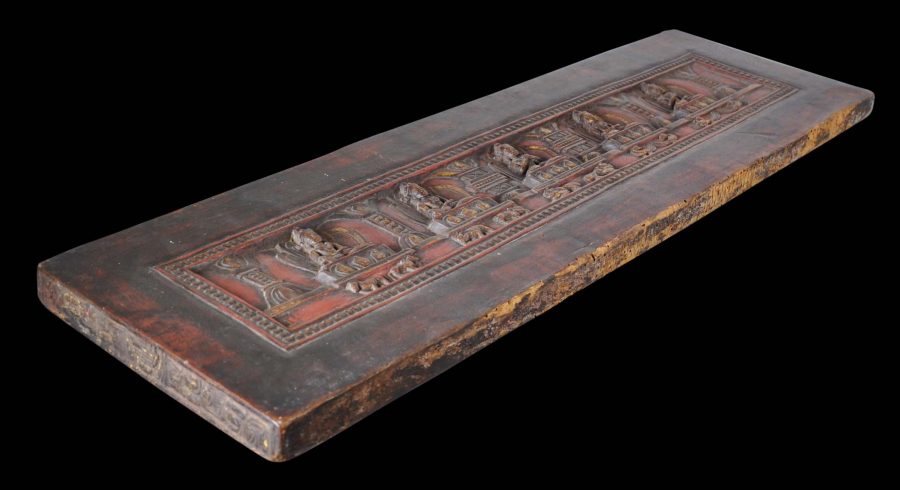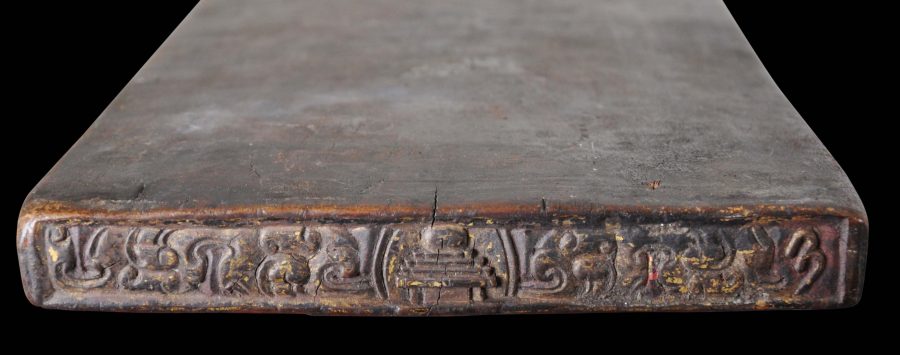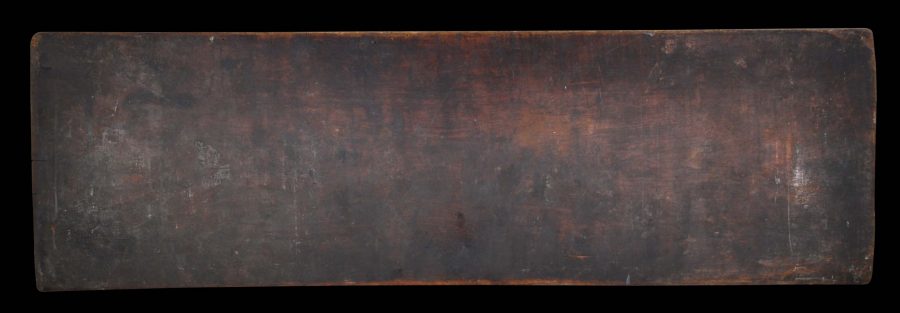This Tibetan manuscript or book cover is decorated with red and gold pigments, and has been carved in relief with the Five Transcendent Buddhas (Tathagatas) who preside over the five cardinal directions, within carved ‘pearled’ borders.
Each Buddha is seated atop a lotus petal throne before a tri-lobed nimbus, and separated by column devices.
Each of the thrones has a pair of vehicle animal supports which help to identify each of the Buddhas. They are, from left to right: Ratnamsambhava, Akshobhya, Vairochana, Amitabha, and Amoghasiddhi.
One of the short edges – the edge that would have faced outwards on a shelf in a monastic library – is carved with a central chorten motif and with stylised scrolling foliage on either side, and on the far right side is a carved syllable from the Tibetan alphabet, presumably in place for cataloguing purposes.
The scheme, long faces of the Buddhas and pearled borders, and relatively uncomplicated design is similar to a cover illustrated in Selig Brown (2012, p. 64) attributed to 12th-13th century Tibet. The example here is broadly of this time if a little later.
The reverse is plain and unadorned.
Such a cover would have been used in a monastery to encase a folding manuscript written on paper. The lot would have then been in cloth, thereby protecting the manuscript but also the cover. Wooden manuscript covers in Tibet tended to be decorated elaborately, to reflect the importance of the texts they protected. Wood was very scarce on the Tibet Plateau and was an expensive commodity so this again signifies the reverence with which the texts were accorded.
There are no losses or cracks. The lower edge however does have some old worm holes.
References
Debreczeny, C., et al, Rubin Museum of Art, Collection Highlights: The Rubin Museum of Art, New York, Rubin Museum, 2014.
Heller, A., Tibetan Art: Tracing the Development of Spiritual Ideals and Art in Tibet, 600-2000AD, Jaca Books, 2000.
Selig Brown, K.H., Protecting Wisdom: Tibetan Book Covers from the MacLean Collection, Prestel, 2012.


